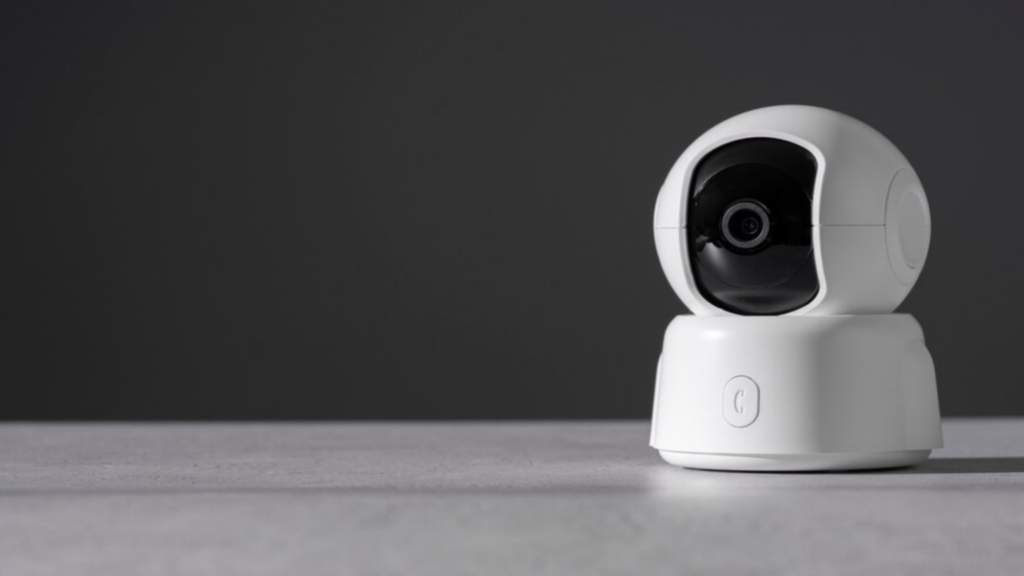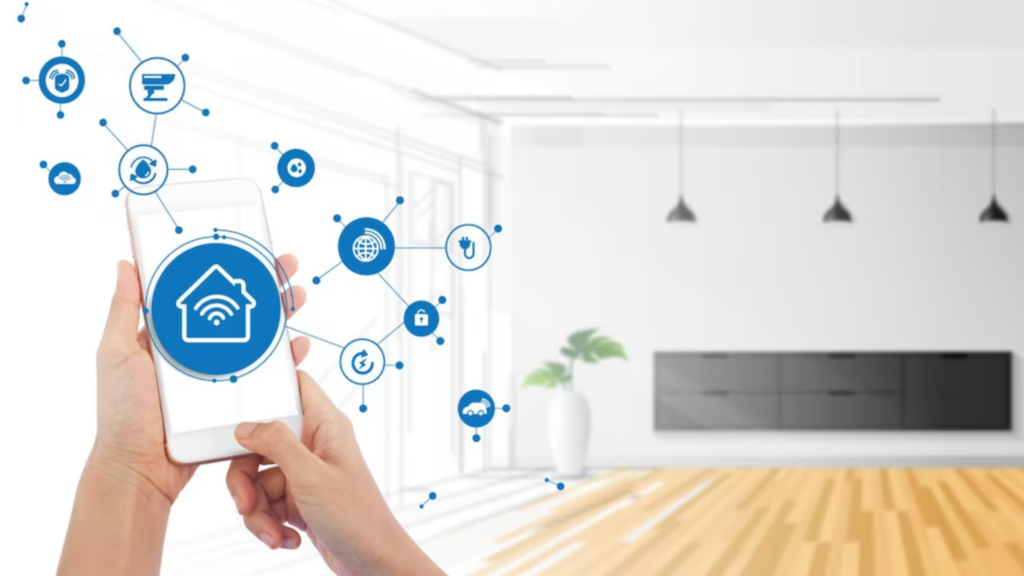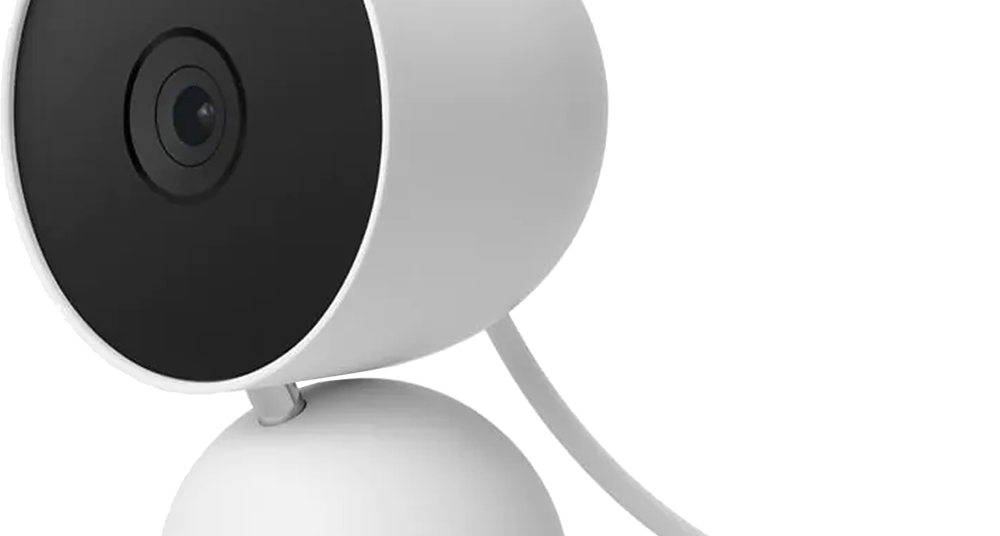Smart indoor security cameras are Wi-Fi-connected cameras that allow you to monitor your home or office remotely. These cameras differ from traditional security cameras in that they connect to your home Wi-Fi network and can be accessed through a smartphone app. This allows you to view live footage from anywhere if you have an internet connection.
Smart indoor cameras have a wide range of features beyond live viewing. Many models support two-way audio communication, motion detection alerts, night vision, cloud storage options, and integration with smart home platforms. Some advanced cameras even have facial recognition, automated tracking, and built-in alarms.
People install smart indoor cameras for several key reasons:
Home security – View any activity and get alerts if the camera detects motion or suspicious activity. This acts as a deterrent and allows you to monitor your home when you’re away.
Convenience – Check in anytime to view your pets, children or home. Many cameras can pan, tilt and zoom giving you a view of any room.
Automation – Smart cameras can integrate with smart home devices and activate lights, locks, alarms or thermostats based on motion detection or triggers.
Smart indoor cameras allow you flexible home monitoring and security through your smartphone and have become an integral part of many smart home and security systems. Their wireless connectivity and broad range of features make them a convenient upgrade from traditional wired security cameras.
Popular Smart Indoor Camera Brands
Smart indoor cameras come from a variety of brands, ranging in features and price. Here are some of the top brands to consider:
Nest Cam
- Made by Google and works with other Nest and Google Assistant devices.
- 1080p HD video, night vision, motion alerts, activity zones.
- Subscription required for additional cloud storage and features.
Arlo
- Offers both wired and wire-free indoor/outdoor cameras.
- Features include night vision, 2-way audio, motion alerts, and cloud storage.
- No required subscription fees.
Eufy
- Anker’s security camera brand, features HD and 2K resolution.
- Local storage options, no monthly fees.
- Starts around $50 for basic indoor cameras and goes up to $350.
As you can see there are a wide variety of smart indoor camera brands at different price points and with different features. Do your research to find one that fits your budget and needs.
Key Features of Smart Indoor Cameras

Smart indoor cameras have a variety of useful features that make them appealing for home security and monitoring. Here are some of the key features to consider when choosing a smart camera:
Video Quality and Resolution – One of the most important factors is the video quality and resolution. Most smart cameras today record in Full HD (1080p) or higher. Higher resolution provides sharper image quality and detail.
Night Vision – Look for cameras with night vision capability, using infrared LEDs to see in low light and complete darkness. The range of night vision can be an important consideration if covering large areas.
Motion Detection and Alerts – Smart cameras have motion sensors to detect activity in the camera’s field of view. When motion is detected, the camera can send instant alert notifications to your smartphone.
Smart Assistant Integration – Many smart cameras work with smart assistants like Amazon Alexa or Google Assistant. This allows for voice control and integration with other smart devices.
Smartphone Control and Alerts – With the camera’s app, you can view live streams, receive alerts, record clips, and control the camera from your smartphone from anywhere.
Two-Way Audio – Useful for communicating through the camera’s built-in speaker and microphone. You can warn intruders that they are being recorded.
Cloud and Local Storage – Video can be stored locally on an SD card or remotely on the cloud. Local storage avoids monthly fees. Cloud storage enables access anytime from any device. Most offer both options.
Installation and Setup
Setting up a smart indoor security camera is a relatively straightforward process for most models. Here is an overview of the typical setup process:
Mounting Options
Most smart cameras come with either a stand or mounting hardware to attach the camera to a wall or ceiling. Stands allow you to place the camera on any flat surface like a table or shelf. Wall/ceiling mounting gives you more flexibility in positioning the camera for the optimal viewing angle.
For wall mounting, you’ll need to drill holes to install the provided screws or anchors. Ceiling mounting is similar but requires drilling overhead which is more challenging. Using the included mounting template makes drilling easier. Some cameras come with adhesive strips for attaching to surfaces without drilling.
Connecting and Powering On
Once mounted, you’ll need to connect the camera to your Wi-Fi network and power outlet. Most cameras connect to Wi-Fi through the smartphone app. After downloading the app, you’ll be guided through the process of connecting to your Wi-Fi SSID and password.
For power, smart cameras come with an AC adapter that plugs into a nearby electrical outlet. Some models offer the flexibility of battery power or solar charging, but these options require routine charging maintenance. Models that plug into an outlet provide continuous power.
With Wi-Fi connected and power supplied, the camera will turn on and be viewable through the app. Additional app configuration may be required depending on your specific needs and camera model. But the essential requirements of mounting, Wi-Fi, and power provide basic functionality out of the box.
Smart Camera App Features
The dedicated app for smart indoor cameras allows users convenient access and control from their smartphones or tablets. Here are some of the key features these apps provide:
Live View and Controls – See a real-time feed from the camera and pan, tilt or zoom (if supported). Speak through built-in microphones or sound alerts too.
Playback Recordings – Browse and view saved video clips and snapshots. Most apps have an easy timeline for quick navigation.
Motion Detection Customization – Adjust the camera’s motion sensor sensitivity and set up custom activity zones to reduce false alerts.
Smart Alerts and Notifications – Get push notifications and alerts when the camera detects motion or sound. Customize alerts based on activity zones.
Remote Access Out of Home – View your camera’s live feed remotely while away through the app. Useful for checking in on pets or home security.
The app allows full control and access to the camera’s features. Easy to use timelines, customization options and smart alert settings make accessing and reviewing footage convenient. Remote viewing provides peace of mind when away from home.
Smart Home Integration

Smart indoor cameras provide seamless integration with other smart home devices and services. This allows you to connect your security camera with your smart home ecosystem for added convenience and automation.
One of the most popular ways to integrate smart cameras is through smart assistants like Amazon Alexa or Google Assistant. You can use voice commands to view your camera feeds on smart displays or TVs, control the camera, and more. For example, you could say “Alexa, show me the front door camera” to pull up a live view on your Echo Show.
Smart cameras can also integrate with smart lighting, switches, thermostats, and other devices for home automation. You can set up triggers like turning on lights when motion is detected, or flashing lights as an alarm if a door is opened while the security system is armed. Geofencing features allow you to automatically arm or disarm your system based on your phone’s location.
Maintenance and Troubleshooting
Smart indoor cameras require occasional maintenance and troubleshooting to keep them working properly. Here are some tips:
Software and Firmware Updates – Like other smart devices, indoor cameras receive periodic software and firmware updates that add new features and fix bugs. It’s important to keep your camera up-to-date to get the latest security patches and functionality. You can usually update the camera firmware directly from the mobile app.
Resetting the Camera – If your smart camera starts acting erratically or loses its connection, resetting it to factory default settings often resolves issues. The reset button is usually located on the bottom or side of the camera. This will erase any custom settings.
Troubleshooting Connectivity – Since smart cameras rely on Wi-Fi, connection problems are common. First, make sure your Wi-Fi router is working properly. Restarting the router and camera can help. Check if other devices have issues connecting to Wi-Fi as well. If the camera connects but has slow streams or choppy video, try moving the camera closer to the router, or get a Wi-Fi range extender. Interference from other devices can disrupt the signal.
Troubleshooting your smart indoor camera and keeping it updated will help maximize performance and lifetime. But if issues persist, you may need to contact the manufacturer’s tech support for further assistance. With proper care and maintenance, most smart cameras provide years of reliable remote monitoring and peace of mind.
Get a Smart Indoor Camera Today!
Smart indoor cameras can provide homeowners with useful features like remote monitoring, motion detection alerts, two-way audio communication, and integration with other smart devices. When choosing a smart indoor camera, the most important factors to consider are the camera’s video resolution, field of view, night vision capabilities, smart features, and integration with your other devices.
The top benefits of a smart indoor camera are real-time remote monitoring and alerts that provide peace of mind about home security. High video resolution ensures important details are captured clearly. A wide field of view allows the camera to cover more area in the home. Smart features like facial recognition and custom activity zones make the notifications more relevant. Integration with other smart devices and virtual assistants provides conveniences like voice controls.
Consider what areas of your home you want to monitor most closely and look for a camera that best meets your needs and budget. For more information on indoor smart camera technology, consult one of our expert energy advisors and they will answer any questions that you might have.


No Comments